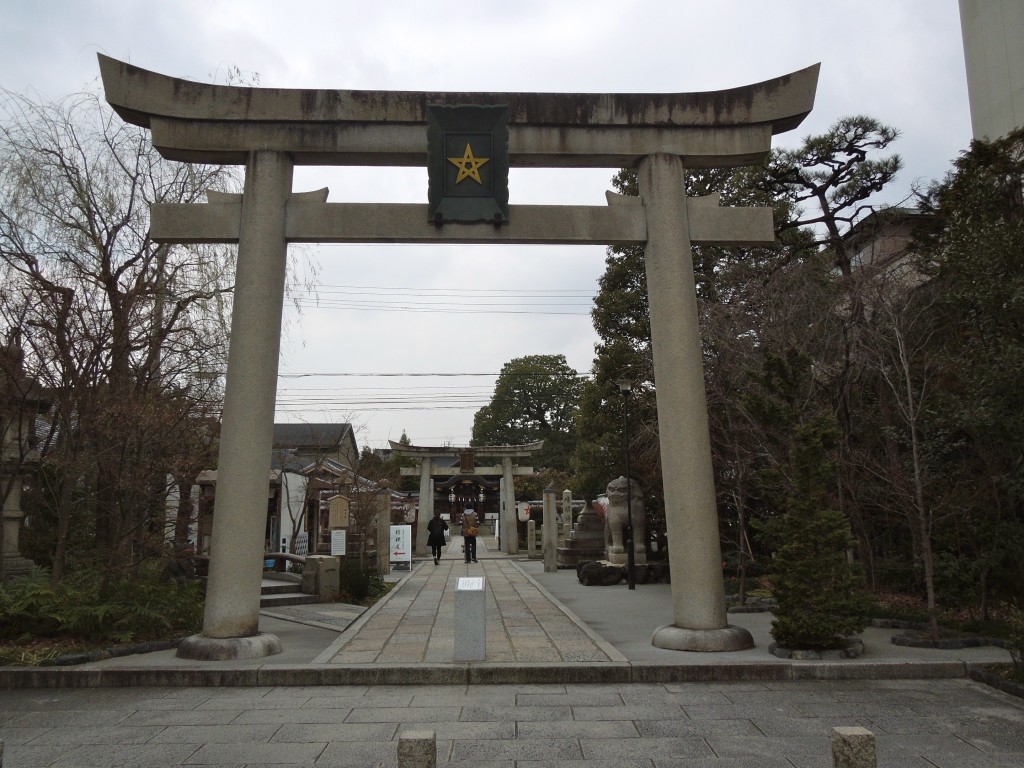
Entrance into the magical world of Seimei Jinja thorugh a torii emblazoned with a pentagram
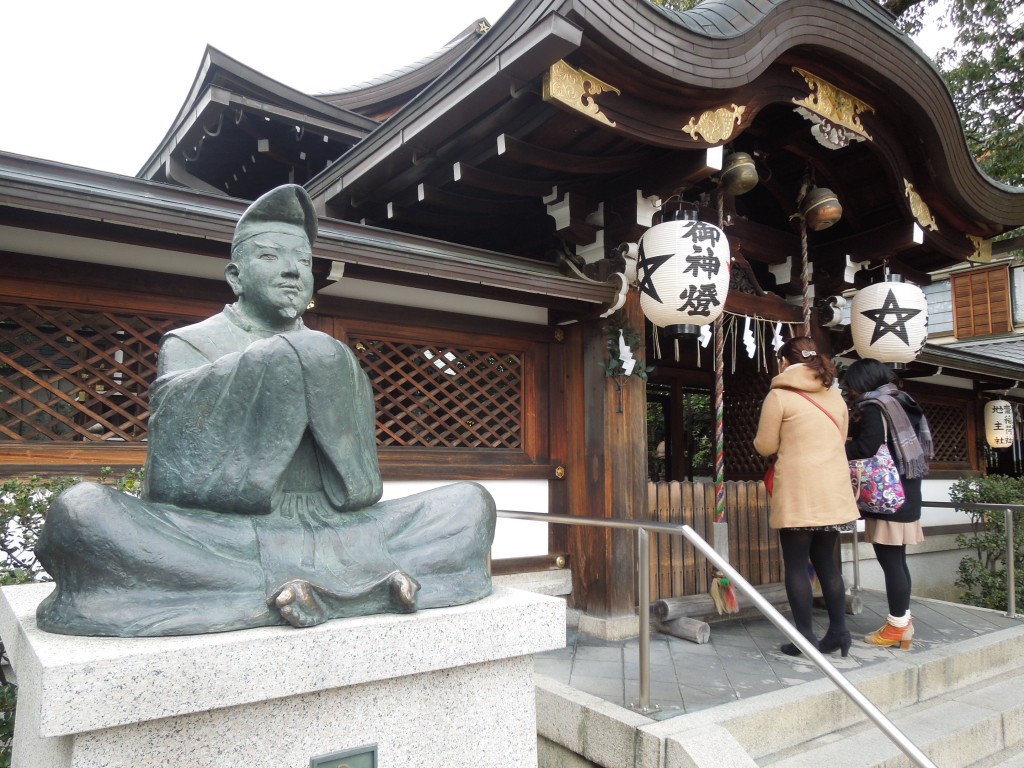
Abe no Seimei (921-1005), Wizard of Yin-Yang, sits in front of the shrine dedicated to him
More than most cities, Heian-kyo lay close to the spirit world. It’s as if its low-lying mists gave rise to a hidden world of unseen forces. People sought advice before embarking on journeys, and there was a six-day calendar of auspicious and inauspicious days which governed even the most mundane of activities, such as nail-cutting and hair-washing.
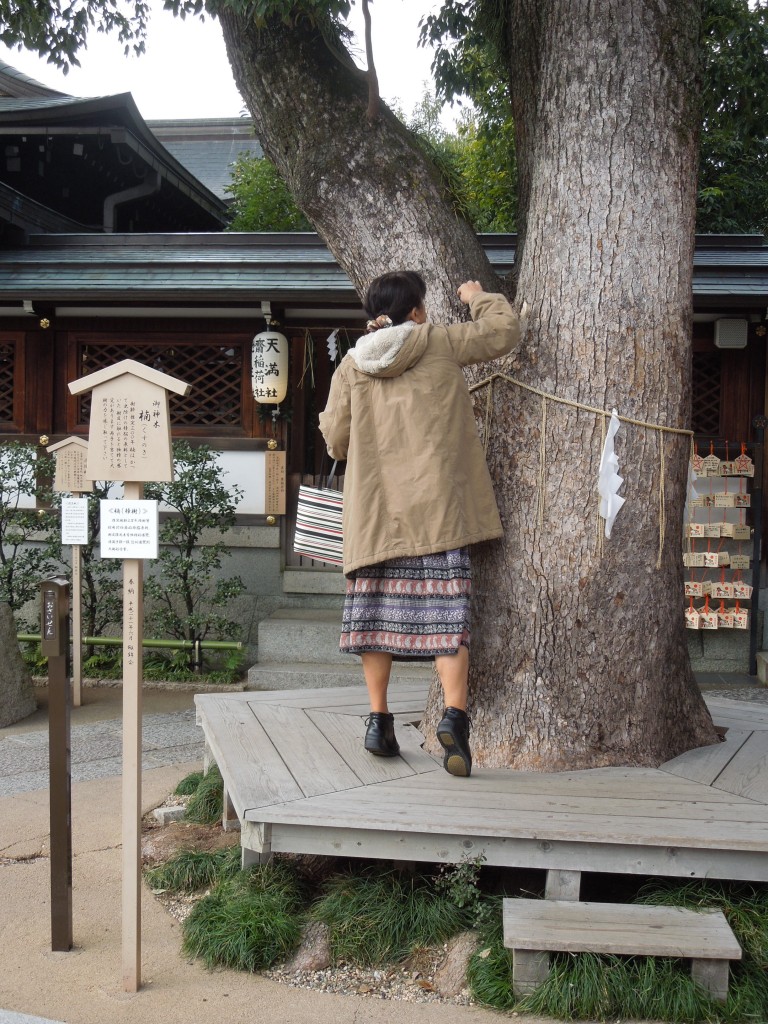
The shrine's sacred tree is said to have special power to fulfil prayers
It was in such an environment that a practitioner of Yin-yang arts (onmyōdō) called Abe no Seimei rose to prominence. The practice had been imported from China, and an office at the court was influential in court decisions through advice based on divination. This was based on complicated calculations involving astronomy, geomancy and numerology.
To his contemporaries Seimei was a genius with second sight, able to perceive an invisible world of ogres and spirits. He could also see star constellations others could not.
The Yin-yang Wizard (onmyōji) rose to prominence by identifying dangerous demons invisible to his seniors. In later years it was said he could raise the dead, summon up human look-alikes (shikigami), and that his mother had been a white fox.
Two years after Seimei died, Emperor Ichijō founded a shrine in his honour. It was constructed on the site of Seimei’s house and in the past comprised a huge estate, which was drastically cut back over time to its modest dimensions today. The main building was restored in 1925.
The entrance torii is notable for bearing a pentagram (known as a Seimei star). Seimei came up with the symbol to express the five elements, and allegedly imbued it with magical power to ward off evil. (By contrast the Western pentagram derives from Greek notions of the five senses.) The shrine also has bellflower decoration on tiles and lanterns, because of its five petals tips.
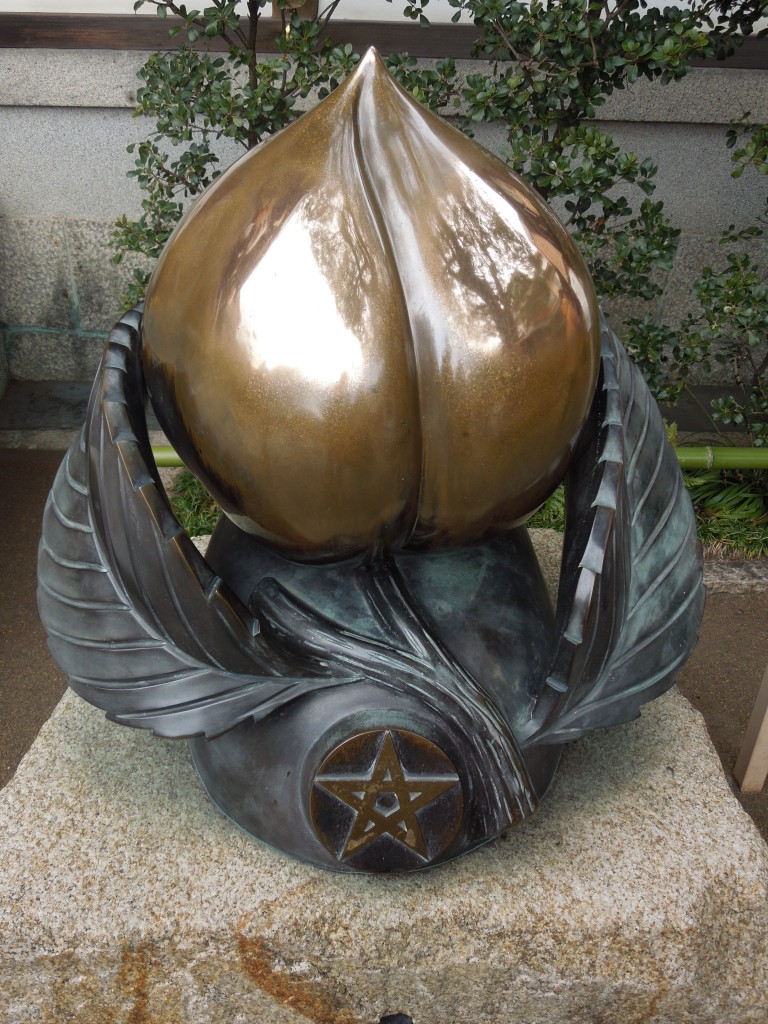
Within the suggestive form of the peach lies a secret world from which sprang Momotaro
Inside the grounds are pictures and text telling about the legend of Seimei. One surprise is a bronze statue of a peach which visitors are invited to stroke to ward off evil, in reference to the Peach Boy legend that appears in the Kojiki (712). The Kyotodreamtrips site states as follows: “In ancient China and Yin and Yang religion, peaches are said to be the fruit for talismans and to ward off evil. In the Kojiki the images of people using peaches to chase away evil spirits can be seen. The bedtime story which most Japanese people know, Momotarou (a boy born from a peach who conquered the land of ogres) also derives from this belief.”
The shrine also has a famous well (Seimei-i), the water of which is considered magical. The noted tea master Sen no Rikyū, based at nearby Daitokuji, is said to have used it to brew tea.
An unusual feature is a small bridge representing the original of the nearby Ichijō Modori-bashi. It had a supernatural allure, for it was used for funerals and thought to bridge the human and spiritual realms. It features too in Seimei lore, with the Wizard preventing an attack by a rival’s shikigami on a nobleman by sealing it into the foundation of the bridge.
For Japan’s New Agers the shrine is a potent power spot, and one sometimes comes across practitioners of Onmyōdō performing rites in very different manner than the usual shrine-goers. They may not be as odd as they appear, for some 70% of modern Shinto is said to derive from Onmyōdō and its importance in the formation of ritual is often overlooked.
For pagans in Kyoto, it’s worth noting that the shrine festival, Seimei Matsuri, is held on the autumn equinox. Since Seimei is Japan’s equivalent to Merlin, you could say it’s a ‘magical’ opportunity to celebrate the turning of the earth!
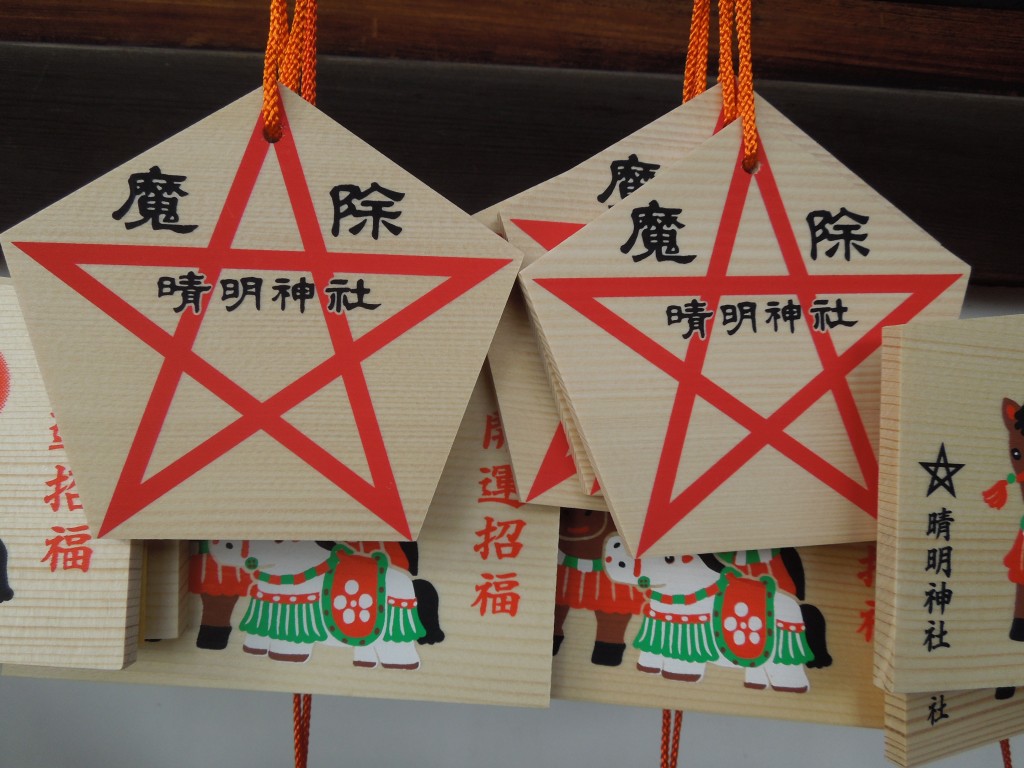
The ema carry the 'Seimei star', said to ward off evil and have magical properties
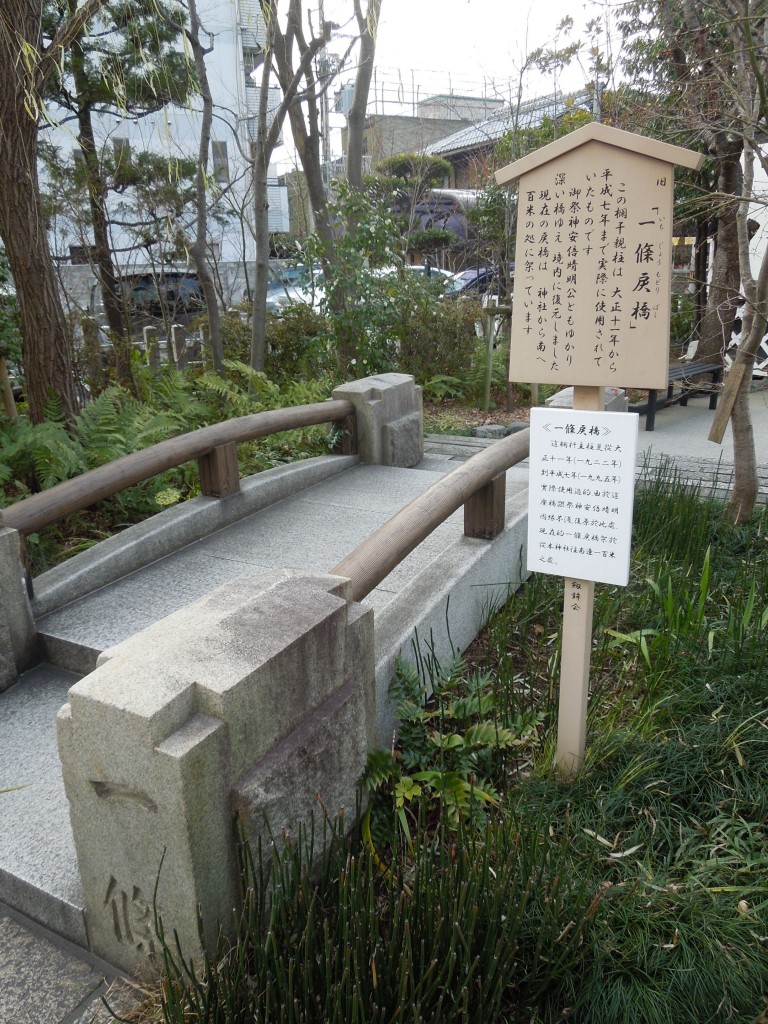
The original version of the Ichijo Modoribashi bridge, which spanned the divide between the physical and spiritual realms
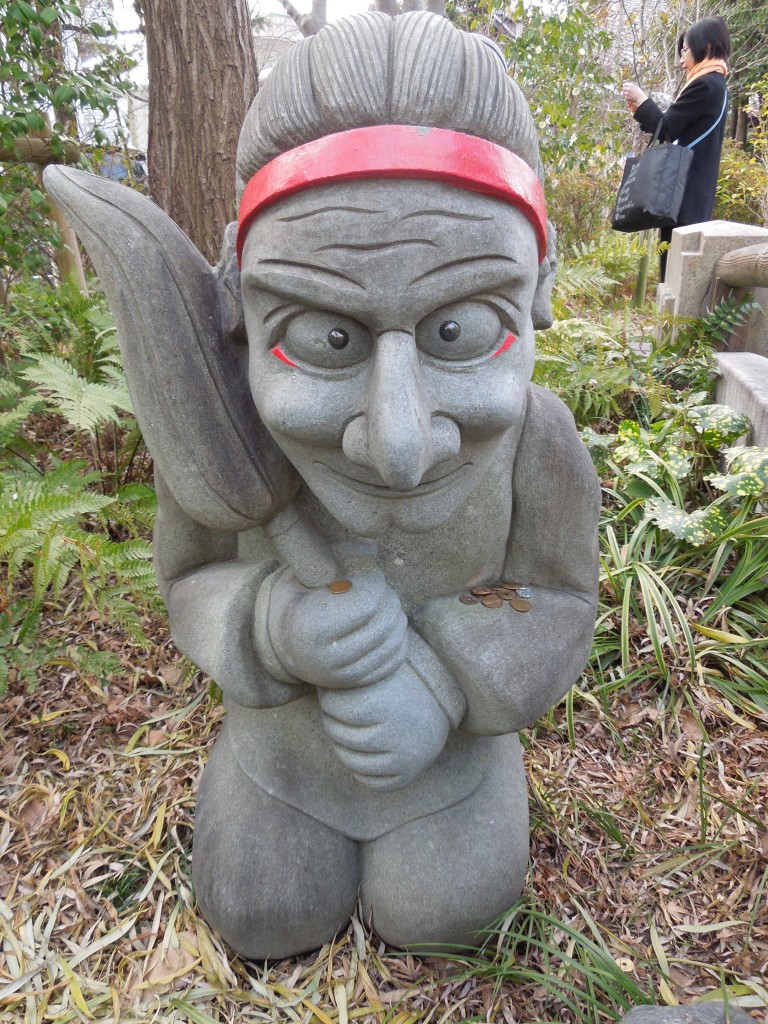
Statue based on an old shrine picture of a 'shikigami' (human-like creation) holding a pine torch (taimatsu). Perhaps it's the one that Abe no Seimei sealed in the foundation of the bridge?

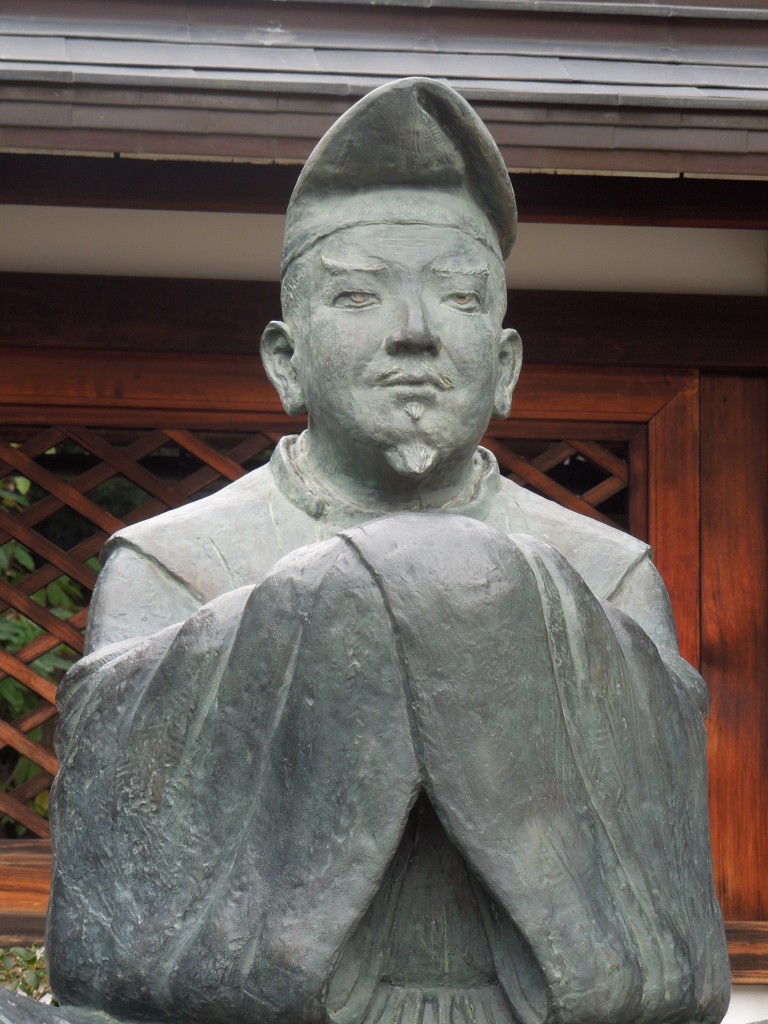
Thank-you John. Another fascinating shrine to visit on my next visit to Kyoto. I’ve come across a few references to the elements in Japan in my research on their use around the globe. For example – the Gorinto, Aikido, Ninja and Shinto itself. The Seimei-star is new to me however. No doubt there are more links to the elements in Japan to discover.
Hi Jann… the elements were everywhere in traditional Japanese culture. They’re embedded in the tea ceremony too… Hope you enjoy your discoveries!